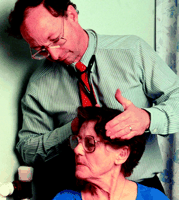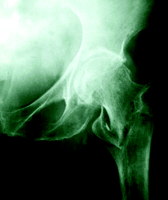This week in the BMJ
Volume 333,
Number 7557,
Issue of 1 Jul 2006
![[Down]](/icons/down.gif) Adherence to treatment or placebo is linked to lower mortality
Adherence to treatment or placebo is linked to lower mortality
![[Down]](/icons/down.gif) Patients' views are not enough to judge quality of care
Patients' views are not enough to judge quality of care
![[Down]](/icons/down.gif) Low cholesterol may not increase risk of stroke
Low cholesterol may not increase risk of stroke
![[Down]](/icons/down.gif) Nine million US citizens are both obese and smokers
Nine million US citizens are both obese and smokers
![[Down]](/icons/down.gif) How to manage hip fractures
How to manage hip fractures
Adherence to treatment or placebo is linked to lower mortality
Adherence to drug therapy may be a surrogate marker for overall healthy behaviour. Simpson and colleagues (p 15) carried out a meta-analysis of 21 observational studies that reported the mortality and good or poor adherence to drug therapy of > 45 000 participants. For participants with good adherence to placebo or beneficial drug therapy, the risk of mortality was about half of that of participants with poor adherence. This supports the existence of a "healthy adherer" effect, say the authors.
![[To top]](/icons/back.gif)
Patients' views are not enough to judge quality of care
Elderly patients' own assessments of technical quality of care in general practice are not closely related to independently ascertained practice records based measures of technical quality of care. A cross sectional study by Rao and colleagues (p 19) carried out the general practice assessment survey with > 3000 patients aged 65 years in 18 English general practices. Correlations between survey scores from the patients' own assessments and the objective records based measures of good clinical practice were 0.22 for hypertension monitored, 0.30 for hypertension controlled, and - 0.05 for influenza vaccination.

|
Credit: WELLCOME PHOTO LIBRARY
|
|
![[To top]](/icons/back.gif)
Low cholesterol may not increase risk of stroke
High alcohol consumption may explain the association between low blood cholesterol and increased risk of haemorrhagic stroke. Ebrahim and colleagues (p 22) looked at cardiovascular risk factors and data of morbidity and mortality of > 750 000 Korean civil servants aged 30-64 over a time period of 11 years. Haemorrhagic stroke was negatively associated with blood cholesterol, but this inverse association was confined to participants with hypertension. When stratified by concentration of  glutamyl transferase, the association was seen in participants with high concentrations of
glutamyl transferase, the association was seen in participants with high concentrations of  glutamyl transferase only.
glutamyl transferase only.

|
Credit: GEOFF KIDD/SPL
|
|
![[To top]](/icons/back.gif)
Nine million US citizens are both obese and smokers
The overlap of smoking and obesity among adults in the United States is low, but nine million are people affected, and this subgroup is concentrated among lower socioeconomic groups. Healton and colleagues (p 25) analysed data of > 29 000 adults from the 2002 national health interview survey. They found that 23.5% of adults were obese, 22.7% smoked, and 4.7% smoked and were obese. Statistics on the overlap of these two conditions could help inform clinical intervention, say the authors.

|
Credit: ERIK S LESSER/GETTY IMAGES
|
|
![[To top]](/icons/back.gif)
How to manage hip fractures
Hip fracture is the most common disabling injury and cause of accidental death in elderly people. Incidence of hip fracture and its public health and economic consequences have risen and will continue to do so with an ageing population. In their clinical review (p 27) Parker and Johansen discuss the epidemiology and classification of hip fracture, and look into different components of care recommended at admission, on the ward, and during and after surgery. The authors also discuss approaches to multidisciplinary rehabilitation, and explore ways to assess and prevent falls and further fractures.

|
Credit: PRINCESS MARGARET ROSE HOSPITAL/SPL
|
|
![[To top]](/icons/back.gif)
Adherence to treatment or placebo is linked to lower mortality
Patients' views are not enough to judge quality of care
Low cholesterol may not increase risk of stroke
Nine million US citizens are both obese and smokers
How to manage hip fractures
 glutamyl transferase, the association was seen in participants with high concentrations of
glutamyl transferase, the association was seen in participants with high concentrations of  glutamyl transferase only.
glutamyl transferase only. 


